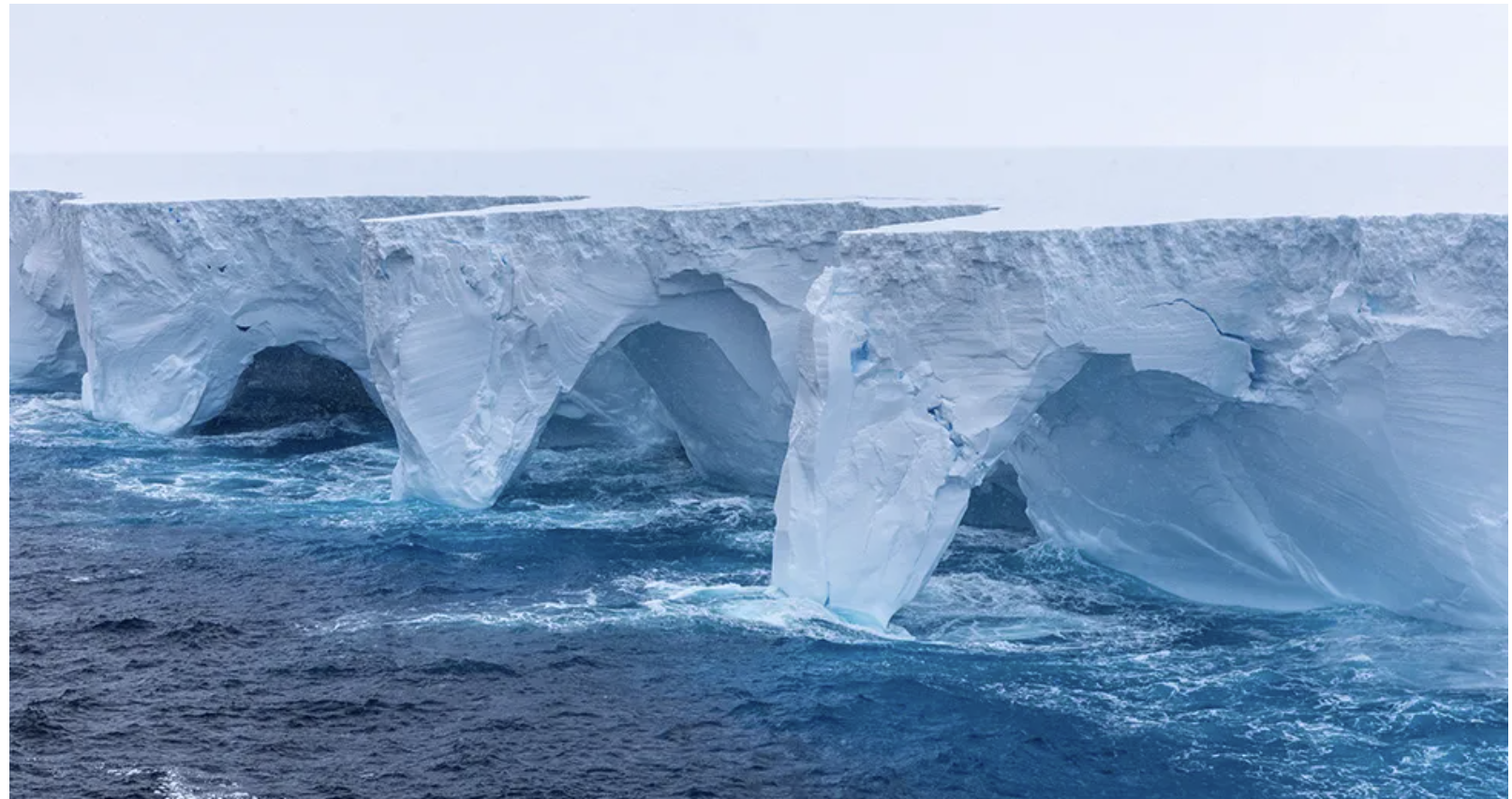
The world's largest iceberg, A23a, is undergoing dramatic changes due to erosion, revealing stunning features like caves and arches.
The photographs from the expedition team unveil the landscape of magnificent caves and arches etched into the iceberg. Videographer Richard Sidey from Eyos described the scene as both dramatic and visually stunning, offering a remarkable opportunity for photography.
Discovered by the Eyos expeditions team, the iceberg is slowly decaying as it encounters warmer air and water. Initially part of the Antarctic coast in 1986, A23a remained in the Weddell Sea for over 30 years, covering an area larger than Greater London. Now, it's drifting in the Antarctic Circumpolar Current towards the South Orkney Islands, following a path known as "iceberg alley."
The fate of these massive icebergs is to gradually break apart and dissolve, enriching ocean life with nutrients in the process. A drone flight by the Eyos team captured the iceberg's 30-metre-high cliffs, shrouded in mist, highlighting its self-created microclimate. The main concern is how long A23a will last as it moves away from Antarctica's cold waters. Warmer temperatures cause surface melt and fractures, leading to the iceberg's gradual disintegration.
Another iceberg, D28 or "Molar Berg," might provide clues to A23a's future. Despite losing a third of its size since 2019, D28 has retained its shape and is now near South Georgia in the South Atlantic. This raises questions about A23a's potential longevity as it continues its journey in warmer waters.



1719319701-0/BeFunky-collage-(10)1719319701-0-165x106.webp)


1735126617-0/Untitled-design-(67)1735126617-0-270x192.webp)




1735025557-0/Untitled-(96)1735025557-0-270x192.webp)











COMMENTS
Comments are moderated and generally will be posted if they are on-topic and not abusive.
For more information, please see our Comments FAQ